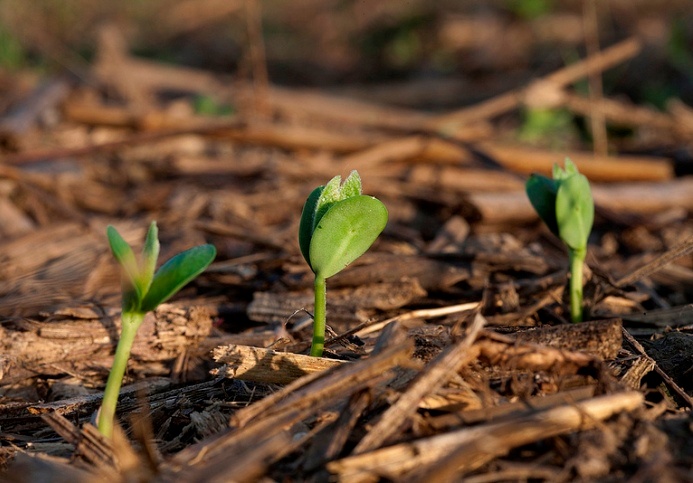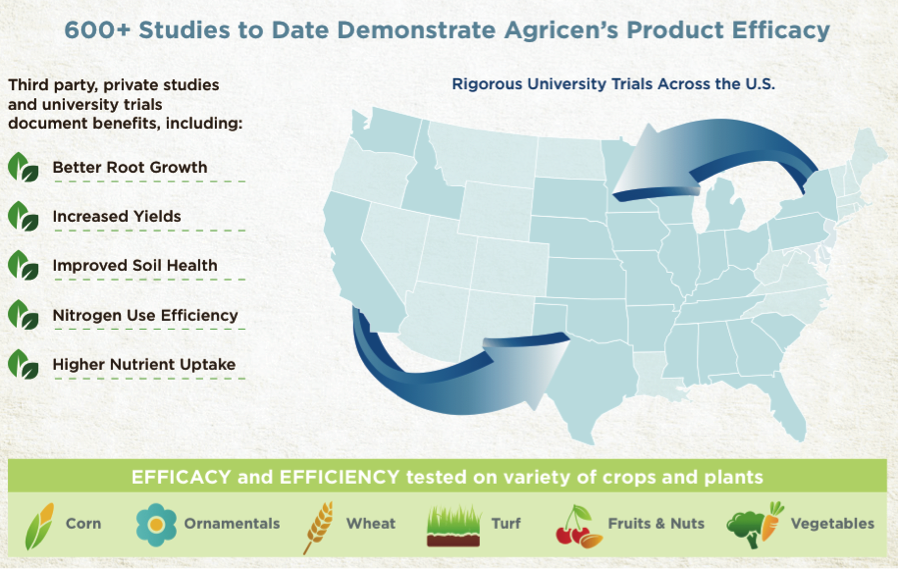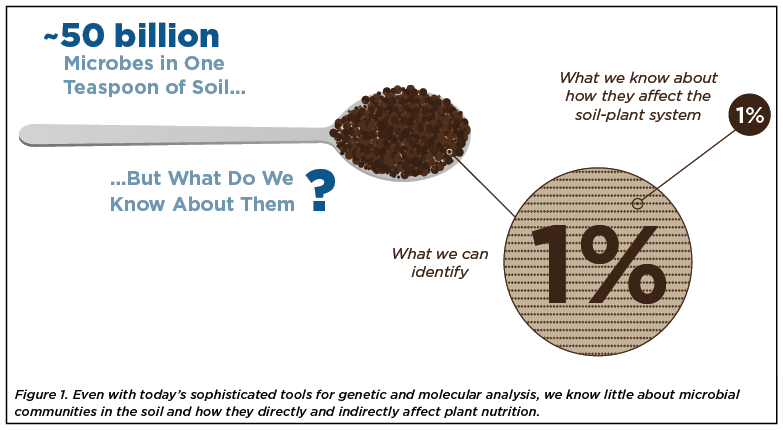by Steve Sexton, Agricen
 Growers today are confronted with a large number of fertilizer additive options, including agricultural biostimulants. Too often, some of these products are lumped into the same category, despite different modes of action and varying impacts on crop yields and return on investment (ROI).
Growers today are confronted with a large number of fertilizer additive options, including agricultural biostimulants. Too often, some of these products are lumped into the same category, despite different modes of action and varying impacts on crop yields and return on investment (ROI).
Humic Acid Products
Humic acid products are biostimulant products derived from leonardite (low grade coal) that is reacted with potassium hydroxide (KOH) to create a black liquid containing organic acids—primarily fulvic and humic. These organic acids are either long- chained molecules (humic acid) or short-chained molecules (fulvic acid) that contain sites carrying a negative charge. When a grower adds humic acid to a production program, it acts like a bucket—it will hold positively charged nutrients by attracting them to the negatively charged sites on its molecules. However, humic acid cannot fill the bucket with the nutrients the plant needs. This is where biochemical or biostimulant products play a critical role.
Biochemical Products
Biochemical products for agriculture contain biochemical compounds—things like organic acids, chelators, and enzymes—as their primary functioning component. Released by natural microbial processes in the soil or by the addition of biochemical products such as Accomplish or Titan XC to existing fertilizer programs, biochemicals play a critical role in plant nutrition. Primarily, they act upon chemical compounds in the soil (e.g., calcium or iron phosphate) to separate cations (e.g., calcium, magnesium) from anions (e.g., nitrates, phosphates), thereby releasing nutrients into the soil solution. In essence, the biochemistry is like a water valve or tap— by releasing nutrients so that they can find locations on exchange sites or be utilized by plants, it fills the empty bucket created by an application of humic acid.
 Humic acid products create a reservoir for nutrients; Agricen's biochemical catalyst technologies release nutrients from chemical compounds in the soil, filling the reservoir and increasing the flow of available nutrients.
Humic acid products create a reservoir for nutrients; Agricen's biochemical catalyst technologies release nutrients from chemical compounds in the soil, filling the reservoir and increasing the flow of available nutrients.
The biochemical components in Accomplish and Titan XC are derived through a proprietary fermentation process and then concentrated to provide a highly consistent, efficacious fertilizer catalyst that improves plant performance and increases crop yields, positively impacting the ROI of a grower’s total fertilizer program.
Summary
In summary, both humic acid and biochemical products are biostimulants that can play a role in a larger plant nutrition program. However, each acts very differently in the soil, with humic acid holding nutrients in place, while biochemical products break apart chemical compounds in the soil, making nutrients more available for the plant. Growers who want to maximize their fertility program may want to first apply Accomplish or Titan XC with their standard program before considering the addition of any straight humic or organic acid products.
Learn more about Accomplish and Titan XC by downloading our Biocatalyst Technology booklet.






![Prove It to Me [Film]: Follow 5 Farmers Through the Growing Season](http://www.agricen.com/hubfs/ProveItSmall.png)









![[Video] Understanding the Science Behind Ag Biochemicals](http://cdn2.hubspot.net/hub/269648/file-675980597-jpg/blog-files/field.jpg)

